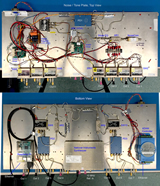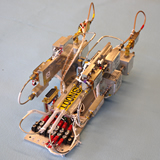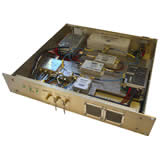The Yuan Tseh Lee Array (YTLA)
The Y.T. Lee Array (YTLA, formerly AMiBA) was dedicated on Mauna Loa in Hawaii during October 2006. It is the first and only instrument dedicated to the study of cosmology in Asia. This frontier instrument for cosmology is led, designed, constructed, and operated by the ASIAA, with major collaborations with the Physics Department and Electrical Engineering Department of the National Taiwan University. Located at a 3400m elevation, the YTLA (formerly AMiBA) has a very sensitive view of the structures of the cosmic microwave background (CMB) radiation that accompanied the initial expansion of the Universe. The CMB structures tightly constrain the constituents of the Universe, such as the contributions of ordinary matter, dark matter, and the hypothetical form of energy, known as dark energy thought to be responsible for the acceleration of the Universe. The YTLA (formerly AMiBA) will also detect and map distant clusters of galaxies via their inverse Compton scattering of the CMB photons. The signatures of the galaxy clusters, which are revealed as a slight cooling of the radiation at a wavelength of 3mm, is independent of distance to the galaxies, making them a very powerful probe for detecting the structures of the distant Universe which would otherwise be invisible. YTLA (formerly AMiBA) operations began in 2007. Initial detections of 8 distant clusters of galaxies have been made via their cooling of the CMB. In 2009, we completed the expansion of YTLA (formerly AMiBA) to increase the number of elements from 7 to 13 and the size of reflectors from 0.6m to 1.2m. This improved our speed by a factor of about 60.






